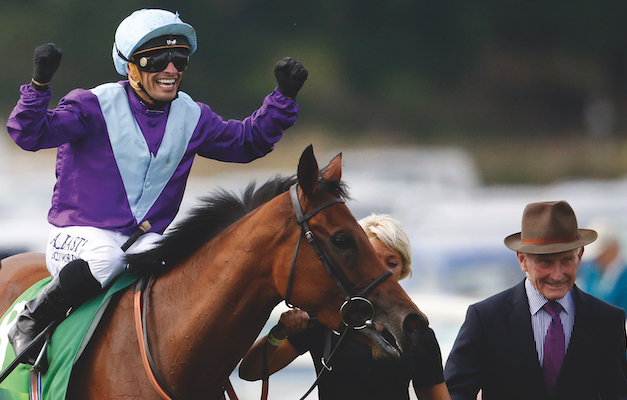Bookmaker Fitzdares looks back through the history books of this four-day race meeting held at York racecourse, to find out who has featured on the roll call of past winners
Fitzdares takes a look back at those who have starred at The York Ebor Festival through history, from Lester Piggott to Frankie Dettori.
Take a look at Fitzdares’ round-up of the Grand National’s fairy tale stories, as well as those against-the-odds victories at Aintree.
SPORTING WAGERS: THE YORK EBOR FESTIVAL
This is not just a feast of flat racing but, believe it or not, tautology. No, ‘ebor’ doesn’t mean festival. It is taken from the Latin word Eboracum, which means York. So, the York York Festival.
From the Latin influence in the Festival’s name comes the Anglo-Saxon etymology of the land upon which the racing takes part, the Knavesmire. The word knave, or Jack, is the least important of the unnumbered playing cards, while mire translates as swampy ground. In other words, a lowly man’s swamp. An ironic name for one of the most pristine and well-attended courses in England. So well attended that some 150,000 turned up to watch Voltigeur take on The Flying Dutchman in 1851.
Those familiar with the famous races of the York Ebor Festival will not have a hard time guessing who won that year. The Great Voltigeur Stakes takes place on the first of the four days and plays second-fiddle only to the main event, the Juddmonte International Stakes. Run over a breakneck one mile and two furlongs, it attracts the best middle-distance thoroughbreds from across the globe. It is run left-handed, as are all races at York, and is open to any horse three years old and up. Its Group 1 status ensures the quality of entries is of the highest order.
A glance at the record books for this race draws attention to the two most enigmatic and talented jockeys of the past half-century, Lester Piggott and Frankie Dettori, who tie on five winners apiece. Unsurprisingly, Aidan O’Brien leads the chasing pack of trainers on six wins, joined only by record Royal Ascot winner Sir Michael Stoute.
As is often the case with the biggest races in England, Frankel’s name is on the roll call of past winners. His win in 2012 was the first time he had run over the distance, yet he dismantled the field by an astonishing seven lengths. Journalist Marcus Armytage commented that “he is a lightning strike of genetics which may not be repeated for 100 years”.
Luckily for us, there was such a frenzied hype around Frankel that his price of 1/10 was hardly backable, unless you are in the business of printing money. Unlike the 15/8 available for Postponed four years later, which saw us swallow a scary five-figure bet.
Yet perhaps the most extraordinary betting heat in this race was when Arabian Queen [pictured] lowered Derby winner Golden Horn’s colours for the first time. At 50/1, she was the biggest-priced winner in the race’s history and thus provided the biggest shock. We scrambled through the field book frantically trying to count our losses, until we realised that we had laid not one bet. An extraordinary turn of events.
Another highlight of the York Ebor Festival is the Ebor Handicap. The oldest race at the meeting, dating back to its inception in 1843, the race is run over a mile and six furlongs, open to horses aged four and older. Although it isn’t a ‘Group’ quality race, it stands out as one of the most exciting races in the calendar.
The competitive nature of the British handicapping system, combined with the race’s staggering purse of a million pounds, guarantees a huge and diverse field. As a notoriously trappy affair, no trainer has won this race twice in the past 12 years. It’s prestige also attracts National Hunt trainers, who find their horses can compete on this race’s handicap terms. Cheltenham Festival regulars Willie Mullins and Gordon Elliott remarkably won the race back-to-back in 2009 and 2010.
A nightmare for favourite-backers, only one has won the race since the turn of the century: Luca Cumani’s Purple Moon at 7/2, ridden by Jamie Spencer. Incidentally, that was only a year after the biggest ever priced winner of the race, Jane Chapple-Hyam’s 100/1 shot, Mudawin. Thus illustrating the wonder and unpredictability of this famed race.
Our records of that day are sadly lost, although one would speculate we didn’t lay a bet on him, either. Or else we might not be writing this article today. One thing to remember when having a flutter this August: big priced winners are no stranger to the York Ebor Festival.
By Fitzdares, Racing Bookmaker of the Year 2020 (fitzdares.com)





